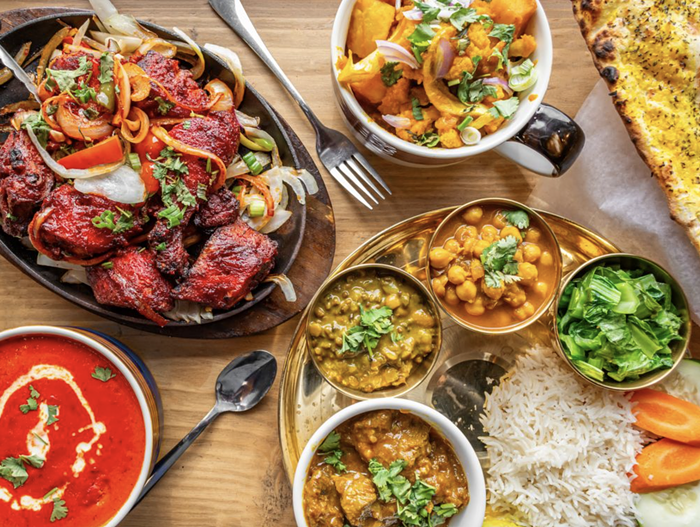My love affair with fried chicken begins in Sharptown, Maryland. This small town, and the rural area surrounding it, has two communities—one black, one white. In the late 1970s, my father was a pastor for three churches in the black community, and we stayed in the parsonage of one of those churches, Mount Zion, on the weekends. During the week, we lived in Chocolate City, not that far from 1600 Pennsylvania Avenue. I attended Janney Elementary and counted an Iraqi chap named Toufique as one of my best friends. On Friday night, my family would leave the city, cross the Chesapeake Bay Bridge, head down Ocean Gateway, and arrive at the parsonage around 10:00 p.m.
Across the street lived Kicky. This scrawny, filthy, hungry kid hated my guts. Everything that was wrong with his life found its expression in everything that was right in my life. He was dirt-poor, and I was from not only an educated family, but a family that came from another planet—Africa. Once, Kicky came to my yard and claimed the new Datsun 210 my father had bought was actually his car; his church paid for it, he yelled, and the parsonage, and all of the furniture and stuff in the parsonage. But the thing that drove Kicky furthest up the wall was the fact that his mother would cook fried chicken whenever I paid his house a visit. Kicky's mother knew that I loved fried chicken, and because I was the pastor's son, she used every penny she could find in her purse to buy and fry fresh chicken for me. The floor in Kicky's cluttered house was crooked, the ceiling disturbingly low, the TV always on, and, when I was there (and that was not infrequent), the chicken crackled and popped in the boiling oil.
When I returned to Zimbabwe in 1981, much to Kicky's relief (I swear he was planning to kill me), all of my African cousins were amazed by my size. I was huge, they were tiny—fried chicken was not so easy to find in the newly independent Zimbabwe. I rarely had my favorite dish until I moved to Seattle in the early 1990s.
Now, in a perfect world, only a few meals would go by without some fried part of a chicken. But I live in the imperfect world, a world that forces me to restrict my consumption of this very fattening type of food—an oil-coated breast, a crisp wing, a crunchy thigh—to one day a week. That day is often Sunday—the day the Lord took a rest after making this imperfect world.
In essence, fried chicken is for the rural worker. Imagine this: He has just returned from the fields, his shirt is soaked in sweat, he smells like a horse, his cows are mooing, the sun is setting, the fireflies are in the air, and the wife has prepared a basket of golden chicken. It sits in the middle of the table, next to some bread ("Breaking bread with my mama, breaking bread"), greens, and a little corn liquor in a teacup. The fried flesh of the breast and leg replenishes whatever energy was spent dealing with the unforgiving soil, pushing the dumb wheelbarrow, and lifting blocks of hay. This is the fried-chicken ideal. This is why it's related to Southern culture, to the plantation world of master and servants. All serious American literary critics are aware that America's pastoral tradition originates in the South. By pastoral, they mean that European medieval ideal of peasants and lords, and the rhythms of the seasons—this was what T. S. Eliot imagined as a "cemented society." Everyone knew their place and role in this order. The South is the American pastoral, and the foods connected with that world are now signs of a society made up of people who, to use the words of Harry in To Sleep with Anger, knew when to say "yes, ma'am, and no, ma'am."
Life in the city has its ideal in sushi—the appropriate food for a person who sits at a desk all day. So to eat fried chicken is to return to an earlier and more challenging period in the economic development of American civilization. But in a city such as ours, this rich rural food is not usually made at home but is bought at a place like Union Market (2101 E Union St, 322-9090). The fried chicken there is basic. There are no surprises; it has the right crispness of the shell, and the meat is cooked all the way through—there is nothing worse than fried chicken that has rawish or squishy meat. If you want just fried chicken, as it should be, this is the place to go. When I recently asked the store attendant at the market, a middle-aged Asian gentleman, how his chicken was prepared (I had just bought a thigh for $1.48), he said, "It is the company that cooks our chicken." Which company is this? He did not share the name of this secret company.
Another place for simple and good fried chicken is the deli in the Promenade Red Apple on 23rd and Jackson (2301 S Jackson St, 328-1505). The chicken there, however, cannot be eaten on its own. It needs to go with the spicy, smoked-turkey-neck-soaked greens, the best thing in the deli (a pound of the greens is $3.99). The breasts at Red Apple, which cost $2.79, are unusually huge, and whoever prepares them—right behind the counter—knows how to cook the things right to the core.
If you want a more authentic feel with your fried chicken, the place to go is down the road at Thompson's Point of View (2308 E Union St, 329-0836). The establishment, however, sells only fried wings, and it's not that cheap (around $9 for a plate). But along with your wings, you get a sense of the world fried chicken has its soul in—the juke joints of the rural crossroads—the good music, the loud laughter, the hard booze, and the food for those who have been exhausted to the bones by plantation work. This was a brutal world, but it was also a simpler and more obvious order of things than the order of things today.
But chicken is not just an American delight. For one, there is karaage, Japanese-style fried chicken, available at most Japanese restaurants. Both the atmosphere—the J-pop and the view of downtown—and the karaage of Fort St. George in the International District (601 S King St, 382-0662) are magical. The best form of Asian fried chicken, however, is the Vietnamese fried chicken called ga chien. You can find this at the deli in Viet Wah supermarket (1032 S Jackson St, 329-1399). It is very spicy (red and green hot peppers and garlic) and comes in small nuggets with a bone at the core. A small container costs $3, a large one $5. The fried chicken here is great, but sadly, there seems to be no system or pattern to its presence or absence from the deli. Some Sundays it is sold; others, it is not.
Lastly, there is the glorious hybrid of the fried chicken at Howell Street Grocery (600 E Howell St, 329-3115). Here you will find a mix of the Ethiopian rural and the American rural. The chicken is made with 12 different kinds of herbs and spices—some are common (garlic, red peppers, jalapeño peppers) and others are not (the uncommon ones are kept secret). "My sister-in-law came up with the idea," says one of the two owners of the business. "She came up with the recipe, and we fry it every morning." Five dollars is all you need to have enough of this great stuff that brings Africa and African America together under a heat lamp. ![]()



















